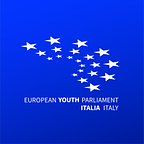The right to disobey
History and shapes of the civil disobedience phenomenon
On June 18th, 1873, the feminist and civil rights activist Susan Anthony tried to vote in the Presidential Elections of the United States of America, despite being a woman. She was stopped, arrested and fined for having disobeyed the law in the attempt to fight and advocate for her rights, for what she believed in.
This episode epitomises the concept of civil disobedience: the refusal to obey the demands or commands of a government, without resorting to violence or active measures of opposition. Civil disobedience has been a major technique in several protests and movements across the world, with the main example being Gandhi’s peaceful protests in India, to gain independence.
The concept was first theorised in the 1840s by the american philosopher Henry David Thoreau, who discussed what an honest citizen should do about a government or administration he or she wholeheartedly opposes. Thoreau stated that citizens should not blindly follow their government, but should follow their own conscience and reason. While under arrested for not paying taxes to the administration he deplored, he declared that “Under a government which imprisons any unjustly, the true place for a just man is prison”.
Civil disobedience is generally regarded as a symbolic violation of the law rather than a rejection of the system as a whole. It is exactly because acts associated with civil disobedience are considered crimes that such acts serve as a protest; by undergoing a punishment, the civil disobedient seeks to set a moral example that will potentially provoke change.
A major example is the American Civil Rights Movement, which peacefully protested against racial segregation and discrimination in the United States during the 1950s and 1960s, bringing positive change. Then, in the 1960s several student protests broke out, both in the US and Europe: in those years, the generational divide kept widening and the youth started protesting for better educational systems and for a fairer and more peaceful society. In light of the ongoing Vietnamese war, marches for peace were held and University students organised several sit-ins to cast light on issues. Both in France and Italy students occupied Universities and marched peacefully, even though clashes and collisions with the police occurred several times: in Paris, Sorbona, Rome, Trento and Milan, students went on strike frequently. In such occasions, students were also supported by workers and labourers. Protests were definitely not welcomed in the Czech Republic, where the repression against students in 1968 was brutal and oppressive.
Between April and June 1989 in China, following the death of one of the reformist leaders of the communist party, protests of students and workers advocating for civil rights broke out in Beijing, mainly in Tiananmen Square. In mid May the leadership of the Communist Party decided to declare martial law; after 12 days of deadlock, the military started moving from the outskirts of the city to Tiananmen square, making their way through shootings and killings. In 24 hours, the tanks reached Tiananmen Square and ran into the civilians, ending the protest and provoking a bloodshed. This photo depicts the so-called ‘Unknown Rebel’, a protester who tried to dialogue with the tanks to stop them. We do not know with certainty how the dialogue ended, and he is now a symbol of civil resistance.
In the same way the recent Hong Kong protests originated from a students’ peaceful movement and escalated quickly to tumultuous civil riots, demanding for full democracy and human rights. It all started with China’s attempt to infringe the “One Country, Two Systems” relationship between mainland China and Hong Kong, with the proposal to allow extradition of criminals from Hong Kong to China, jeopardising judicial independence. Police brutality and riots have become ordinary, in a chaotic situation that does not see a easy resolution.
Moreover, pro-democracy protest broke out in Sudan in 2019, following the military coup that shifted power; as a response, civilians were shot at and the capital Khartoum stayed under lockdown for some days. In the aftermath of protests, an agreement was reached in August, establishing a transitional military-civilian government. However, a peaceful demonstration in February 2020 was welcomed with tear gas attacks by the police, proving that the struggle towards democracy is still ahead.
The principle of civil disobedience has proved to be a good resource when the commonly established ways to relate with institutions and governments are not available. However, civil disobedience alone cannot be a long-lasting solution; social cooperation, activism, political courage and civil initiatives are key in bringing about positive change. In democratic societies, the possibility to appeal to fellow citizens with Petitions and Citizens’ Initiatives is concrete, and should be fostered and exploited at best to increase civil participation and active citizenship.
Civil disobedience in synergy with political action can and need to bring about the change we want to see in our societies.
by Enrico Zonta
